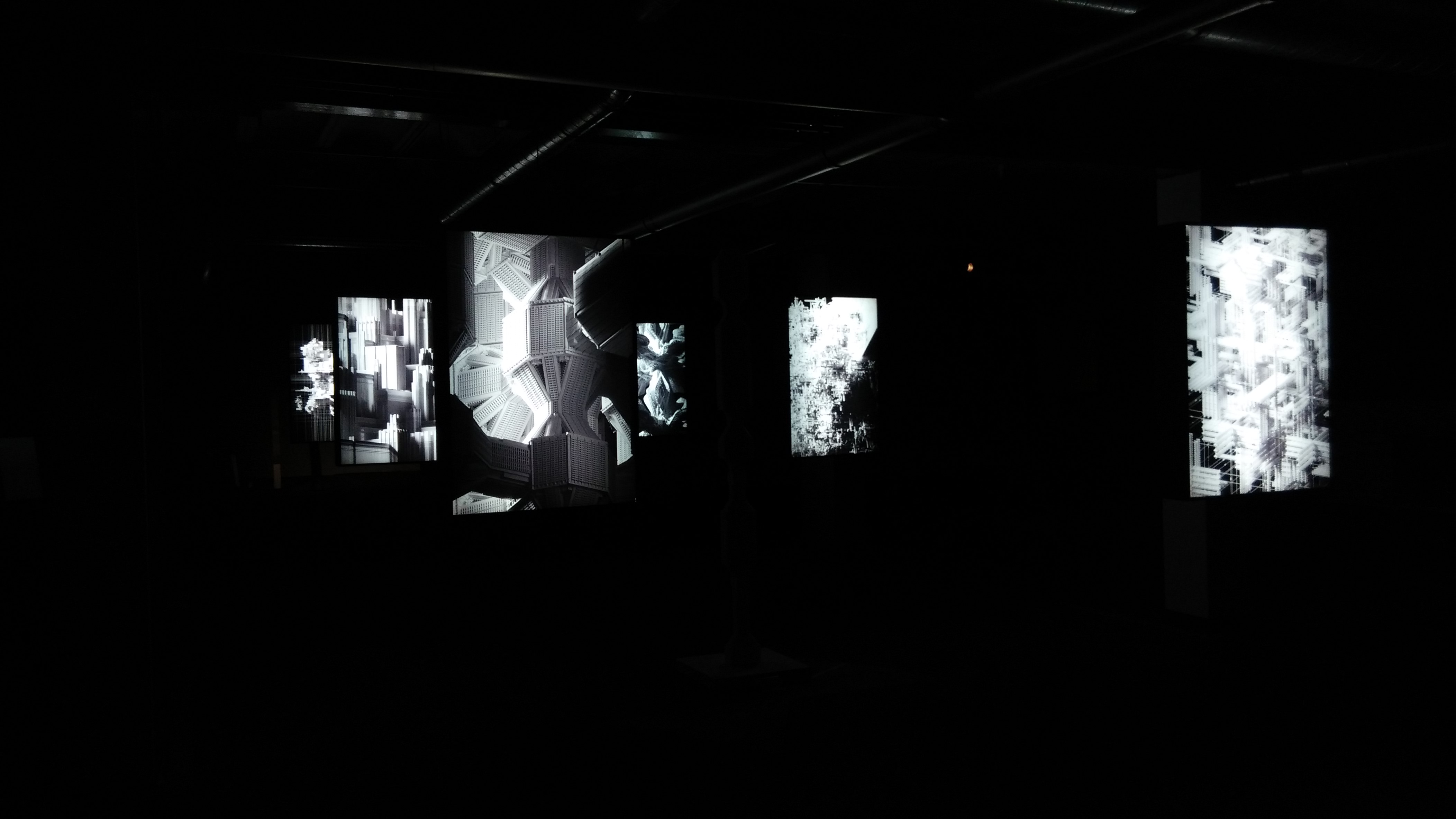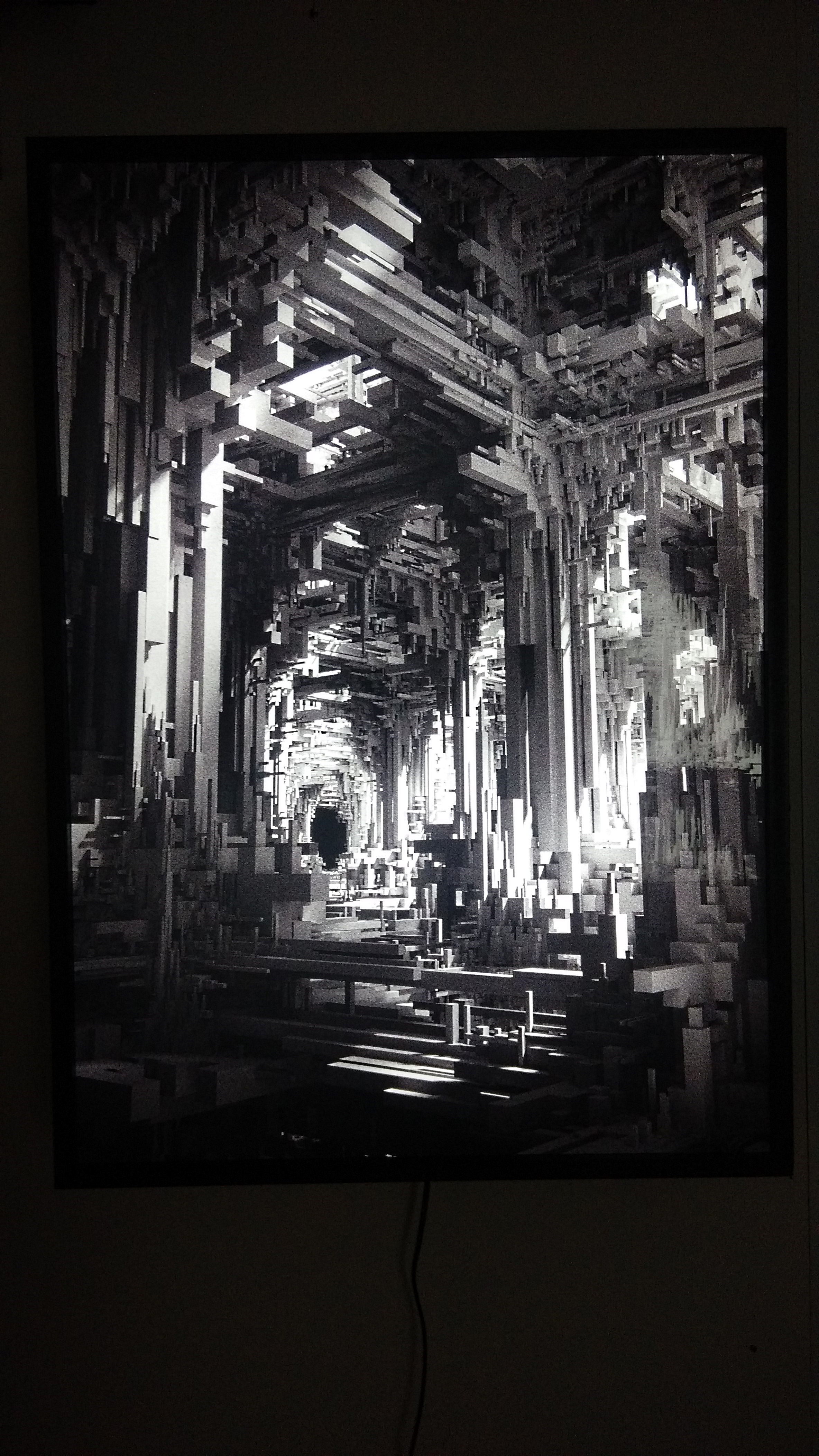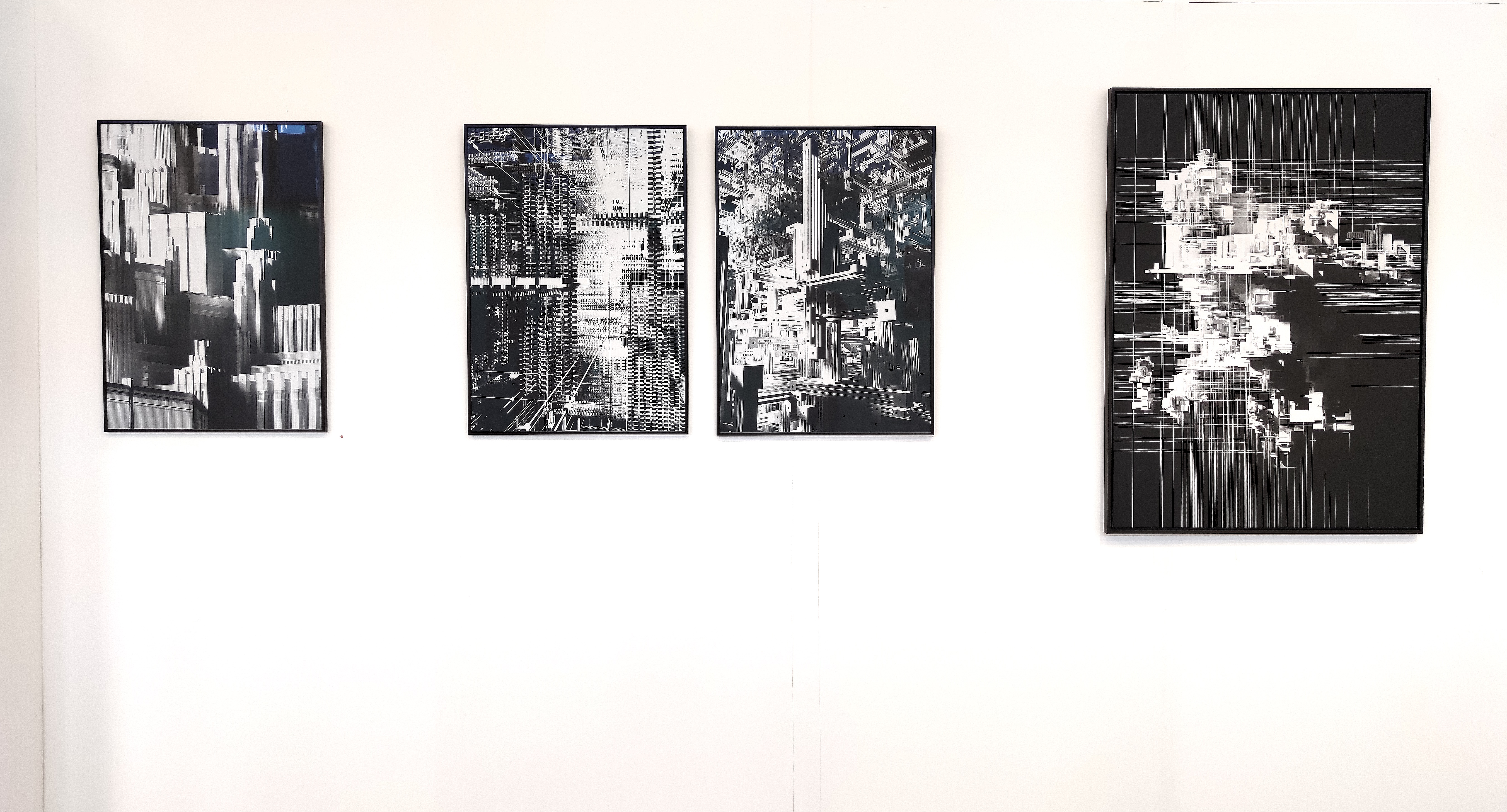
Paradise Found

World Explorations

Silkscreens
Alexander van Bakel is an artist and writer born (1994) and based in Amsterdam.
Because I have not managed to produce all the works I have made a publication to showcase the different directtions this project is taking.
Download publication of selected works 2018-2021 here:
> Download Publication.pdf <
PARADISE FOUND
An essay concerning the origins, the context and deeper meaning.
The world of 'Paradise Found,' which is currently my main focus, originated during my second year of study at the Gerrit Rietveld Academy. It all began with a profound fascination for cruise ships and the inexplicable allure they held for people. These colossal structures, meticulously designed to entertain and provide relaxation, intrigued me. In particular, David Foster Wallace's amusing essay about his own cruise experience left a lasting impression and I highly recommend reading it.
Like Wallace, I perceive a place created solely for such purposes, with no means of escape, as akin to a dystopian prison. The comparison may seem far-fetched, but both environments are highly structured, each with its distinct intent—one for leisure and comfort, the other for punishment. This striking contrast compelled me to contemplate the notions of limits and freedom, exploring how constraints on freedom can create environments that elicit either pleasure or displeasure.
During my research, I delved into the realm of video games, which, in many ways, share a similar structure to cruise ships. Once again, these virtual environments impose limitations on players' freedom while simultaneously offering alternative forms of freedom, such as superpowers. I view video games as digital resorts or cruise ships, allowing individuals to momentarily escape reality by immersing themselves in a structured setting that restricts certain freedoms while introducing others. In my exploration, I stumbled upon a Minecraft cruise ship—a creation devoid of any purpose within the game itself. It neither traverses nor serves as a means of relaxation. Rather, it stands as a testament to the pure joy of building within the Minecraft environment.
Before moving forward, let me briefly explain how Minecraft works. The game empowers players to construct and create as they please, albeit with limitations. Building blocks are cubes that can only be placed at specific points, dictated by an invisible grid that permeates the game world. Minecraft offers two game modes: survival, where players must navigate a hostile world and gather resources, and creative mode, where unlimited resources are available for unrestricted building.
With these concepts in mind, I started utilizing Minecraft as a modeling tool, adding an intriguing aspect to every 3D model. Minecraft's fixed-size blocks imbue everything with mathematical proportionality, as all measurements align with a standardized unit. This can be likened to the Alhambra, where mathematical relations define proportions and wall motifs to breathtaking effect.
From this fundamental unit or constant, more intricate structures emerge through various arrangements of elements. I find this notion captivating, as I believe it holds great relevance to our reality. At the fundamental level, everything within our reality stems from a common element. Distinct structures arise due to inherent properties of this element. As these structures interact with one another, they generate higher levels of complexity. To delve deeper into this concept, I recommend reading Stuart Kauffman's "At Home in the Universe." Similarly, Spinoza's ethics adopts a comparable architectural structure, employing simple axioms to deduce complex conclusions although not all of Spinoza's arguments hold true, this structure served as inspiration. His world, much like mine, is inherently deterministic. One could argue that his pantheistic notion of God is embodied within the mathematical relations that define and govern both universes.
Religious references are undeniably present in my work, as these worlds manifest as 3D models-clean, pristine, and existing in a separate realm. The digital world of 3D models could be likened to Plato's metaphysical world of ideas. In the digital space, models assume perfection and mathematical precision, while their realization in reality introduces imperfections and roughness, with supporting structures intact. This aspect is an avenue I aim to further explore, capitalizing on the imperfections that manifest when transitioning something from the virtual realm to the physical world.
As mentioned earlier, the concept of complexity is a central aspect of my work, albeit in a more rudimentary form. It is truly remarkable how applying this method can give rise to an array of distinct shapes with varying levels of complexity, even without reaching extraordinary heights. My work celebrates this astonishing diversity.
Minecraft introduced another dimension to my project: architecture and its historical significance. Architecture, like the structures I explore, is a system that simultaneously limits and enables movement and freedom. Throughout history, architecture has served various purposes, including showcasing a government's dominance over its people. There exists a profound connection between strictly hierarchical organizations and architecture, evident in the context of the church, Nazi Germany, Soviet Russia, North Korea, and modern-day multinational corporations. Deyan Sudjic's book, "The Edifice Complex," delves into the intricate relationship between power and architecture and is a recommended read.
This aspect of my research led me to delve into the darker facets of control and systems. In my work, I draw inspiration from Franz Kafka's novels and Piranesi's imaginary prisons, both of which present stunning artistic visions of this topic. I will now briefly outline the similarities between their work and mine to underscore these connections. The most apparent link lies in the maze-like, endless, and desolate quality that both artists employ in their creations. Visually, I strongly reference Piranesi's prison etchings, utilizing high contrasts and a low point of view to evoke the illusion of imposing architecture. I extensively employ this technique in my work, deliberately reinforcing the connection between their work and mine. The structures or architecture depicted and described in their works possess a superhuman quality, evoking a sense of unchangeability and insensitivity to human emotion. This notion permeates my own worlds. The absence of scale and the sterile aesthetic imbue the structures with a sense of otherworldliness. I believe that it is within the digital realm where I contribute content and build upon their legacy. The digital world offers immense opportunities and possibilities, but it also harbors dark aspects. Our data is harvested, sold, or exploited by governments for surveillance or other unsavory purposes. These worlds can also be seen as environments where systems have taken control, presenting a perspective in which humans have no place due to their inherent inefficiency. The repetitive nature of the structures suggests algorithmic generation, yet the entire process is akin to a more intuitive form of expression, much like painting a picture.
All these elements serve as a fertile foundation for my creative endeavors. I have developed a distinctive working methodology that not only provides me with a unique visual signature but also references a rich history of architectural and artistic achievements, placing my work within the context of art history while also pushing it further. All these elements found their outlet in my graduation project, 'Paradise Found.' Within this project, I fashioned a solar system comprising nine distinct worlds or planets, each reflecting an archetypal aspect of our earthly realm. For instance, one world draws inspiration from an Amazon distribution center, while another is based on amusement parks.
After my graduation, I chose to treat this universe as a distinct world, governed by its own logic and rules. I embarked on a comprehensive exploration of this universe, resulting in a diverse range of works. One series delves into landscapes, while another showcases a collection of creatures I've gathered and attempted to categorize. In yet another series phenomena and particles are explored. Currently I feel like I've only scratched the surface of what is out there and I hope you will follow me along on my further explorations.
EDUCATION:
2023 - 2025: Leiden University, Creative Intelligence and Technology, Leiden
2015 - 2018: Gerrit Rietveld Academy, DesignLAB, Amsterdam
2017 - 2018: University of Amsterdam, Minor Programming, Amsterdam
2017 April - Juli: Jonas Lund, Internship, Berlin
2014 - 2015: Utrecht School of Arts, Product Design, Utrecht
2013 - 2014: University of Leiden, Art History, Leiden
2012 - 2013: TU-Delft, Industrial Design Engineering, Delft
2011 - 2012: Gerrit Rietveld Academy, Orientation year, Amsterdam
EXHIBITIONS
2024
"ArtTechTour" Energiehuis, Dordrecht
"Living" V2 Institute for unstable media, Rotterdam
2023
"Urban Oasis" Kunsthal45, Den Helder
"A Public Affair" Young Collectors Circle x Dead Darlings, Amsterdam
The Frozen Fountain, Amsterdam
"Lost in Paradise" VanZijlLanghout contemporary art, Amsterdam (solo)
2022
"Window openers" Artwell Residency, Amsterdam
2021
"Ik u ook" Biederberg Gallery, Amsterdam
"Kunst tiendaagse" Zinc exposities, Bergen
"KunstRai" represented by WOW Amsterdam, Amsterdam
"This Art Fair" This Art Fair, Amsterdam
Het Kunstgemaal, Bronkhorst (solo, cancelled due to corona)
2020
"World Explorations" WOW Amsterdam, Amsterdam (solo)
"Ik u ook" Het Kunstgemaal, Bronkhorst
"The space in between" Het vrij paleis, Amsterdam
"Paradise Found" Prinsenkwartier Delft, Delft
"Highlight Delft" Vakwerkhuis, Delft
"Art Rotterdam" The New Current, Rotterdam
2019
"Licht" Galerie Pouloeuff, Naarden
"Another day in Paradise" Galerie de Meerse, Hoofddorp
"Future nature" Het kunstgemaal, Bronkhorst
"Paradise Found" VondelCS, Amsterdam (solo)
"Maison Gramont" Arts et Culture, Fanjeaux
"Unknown Paradise" Cityscapes Foundation, Amsterdam
"Ingenieurskunst" Cityscapes Foundation, Amsterdam
"Signals from Paradise" Het Vrij Paleis, Amsterdam
"Paradise Found" Object Rotterdam, Rotterdam
2018
"Linkedup" Media art festival Friesland, Leeuwarden
"Paradise Found" Dutch Design Week, Hutspot, Eindhoven
"Will the future design us?" Dutch Design week, Manifestations, Eindhoven
"Team Franc the graduation show" Corrosia Theater film and Expo, Almere
"Jong Talent 2018" Stichting Artphy, Westerwolde
"Future flash 200- from Frankenstein to Hyperbrain" GOGBOT festival, Enschede
"The graduation show" Gerrit Rietveld Academy, Amsterdam
2017
"What is happening to our brain" Rietveld Uncut, Stedelijk museum, Amsterdam
"Absurd Beings" Cultureel centrum t'Fijnhout, Amsterdam
2016
"Cook the kitchen" Stichting Mediamatic, Amsterdam
"Let's talk about violence" What design can do, Muziekgebouw aan het IJ, Amsterdam
"Bots bodies beasts" Rietveld Uncut, Vlaams cultuurhuis de brakke grond, Amsterdam
COLLECTIONS
KPMG, Antoni van Leeuwenhoek Ziekenhuis, Collection Cees Dam, Collection Dirk van den Broek, VondelCS, Het Kunstgemaal, various private collections
PUBLICATIONS & MEDIA
2020
Review of Highlight art and technology festival Delft
> jegensentevens.nl <
Interview and artist talk about my work and process for "the new current." A Rotterdam based initiative aimed at promoting and exhibiting work(s) from artists at the start of their career during "ArtRotterdam."
> thenewcurrent.org <
2019
Openingspeech at the exhibition "De duizelingwekkende verbeelding van Piranesi" at De Kunsthal in Rotterdam
> Kunsthal.nl <
"Paradise Found" featured in "De architect." Journal and online platform for architecture.
> dearchitect.nl <
"Paradise Found" featured in "het museumtijdschrift." A dutch informative magazine about exhibitions and other cultural events.
> museumtijdschrift.nl <
2018
Presentation about "Paradise Found" at STROOM in The Hague. A center for art and culture in The Hague.
> zefir7.nl <
Article about "Paradise Found" in "X=Y magazine." An online magazine for art and design.
> x-is-y.com <
> alexandervanbakel@protonmail.com <
> Instagram <
+31 6 20722850
Copyright Alexander van Bakel 2021 & beyond